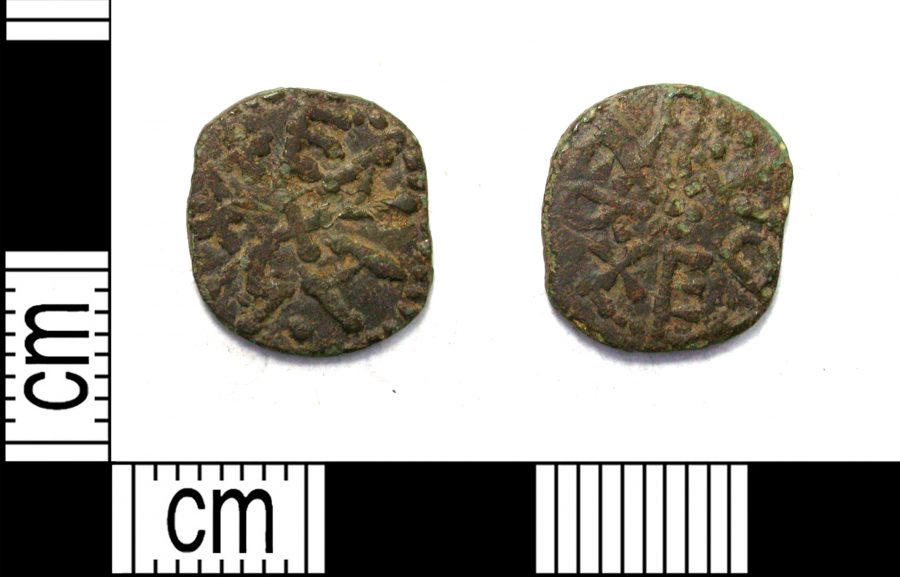
Description
Northumbrian Styca (LEIC-0D9D6F)
A copper-alloy Northumbrian styca found near Widmerpool, Nottinghamshire
This Northumbrian styca was probably minted in the name of Æthelred II of Northumbria possibly by the moneyer Eanwulf. While Wessex and Mercia were using silver coinage as part of their monetary economy, Northumbria was using copper coins known as stycas, which may have contained trace amounts of silver. The concentration of these coins at sites such as Torksey and ARSNY (‘a riverine site near York’) suggests that they could have remained in circulation after the fall of Northumbria in 866 but were taken to these sites by the Vikings during their campaigning. This particular example was likely brought to Nottinghamshire from Northumbria by means of the Great Army’s overwintering activities in and around Nottingham.
Object Type
- Coin
Date
- circa 841 — 848
Style
Ascribed Culture
Original/Reproduction
- Original
Material
Collection
- Viking Objects
Current Location
- Private Ownership
Keywords
- Anglo-Saxon, coin, Currency, Economy, Northumbria, Nottinghamshire, Portable_Antiquities_Scheme, styca, Torksey, trade, Viking, Winter_camp
Further information
You can see the original at Private Ownership.
Acknowledgements
(c) Portable Antiquities Scheme, CC BY-SA 2.0
References
Williams, Gareth. “Viking camps and the means of exchange in Britain and Ireland in the ninth century.” In Clarke, Howard B., and Ruth C. Johnson, eds. The Vikings in Ireland and beyond: before and after the Battle of Clontarf. (Dublin: Four Courts Press, 2015), pp. 93-116.
